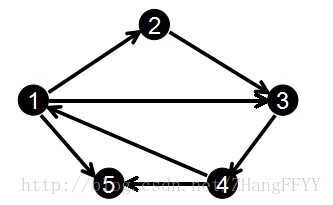标签:NPU scan eof 结构 邻接表 code space ++ 方式

Input
5 7
1 2
2 3
3 4
1 3
4 1
1 5
4 5
output
1 5 3 4 2
#include<bits/stdc++.h>
using namespace std;
const int maxn = 150;
const int maxm = 1050;
int n, m;//顶点数,边数
int head[maxm], tot;
bool used[maxn];
//head[u]表示已知的最后一条以u为起点的边在边集e中的下标
struct edge {
int to, next;
//e[i].to表示边的终点,e[i].next表示上一条和边e[i]起点相同的点在e中的下标
//int w;权值
}e[maxm];//边集
void init() {
tot = 0;
memset(head, -1, sizeof(head));
memset(used, 0, sizeof(used));
}
void add(int u, int v) {//在图中加边
//e[tot].w = w
e[tot].to = v;
e[tot].next = head[u];
head[u] = tot++;
}
void dfs(int u) {
used[u] = 1;
printf("%d ", u);
for (int i = head[u]; i != -1; i = e[i].next) {//遍历的方式
int v = e[i].to;
if (!used[v]) dfs(v);
}
}
int main() {
while (scanf("%d%d", &n, &m) == 2) {
init();
for (int i = 1; i <= m; ++i) {
int from, to;
scanf("%d%d", &from, &to);
add(from, to);
//add(to, from)无向图
}
for (int i = 1; i <= n; ++i) {
if (!used[i] && head[i] != -1) dfs(i);
}
printf("\n");
}
return 0;
}
/*
5 7
1 2
2 3
3 4
1 3
4 1
1 5
4 5
1 5 3 4 2
*/链式前向星和邻接表的思想是一样的,
区别就是:邻接表是用链表实现的,可以动态的增加边;
而链式前向星是用结构体数组实现的,是静态的,需要一开始知道数据范围,开好数组大小。
相比之下,邻接表灵活,链式前向星好写。
标签:NPU scan eof 结构 邻接表 code space ++ 方式
原文地址:https://www.cnblogs.com/Roni-i/p/9291783.html